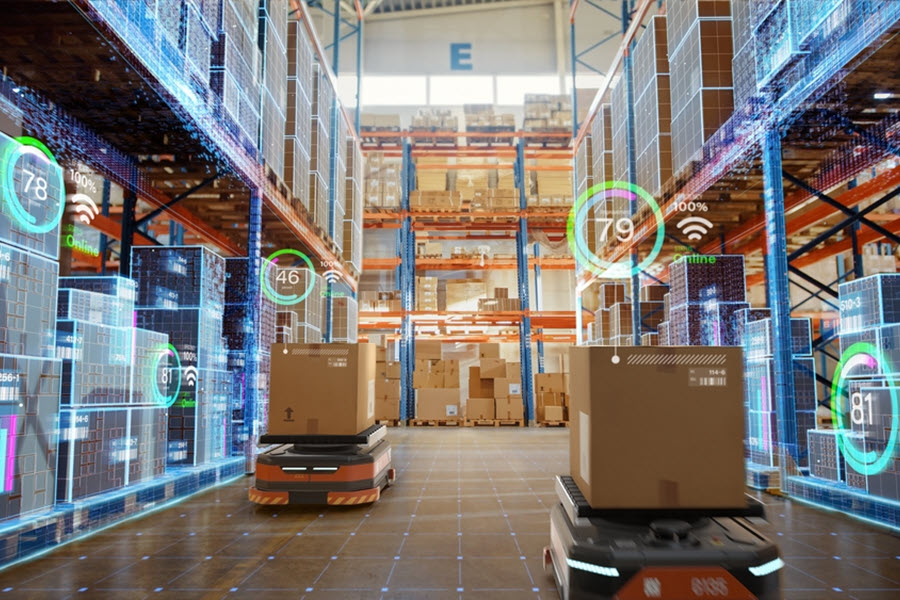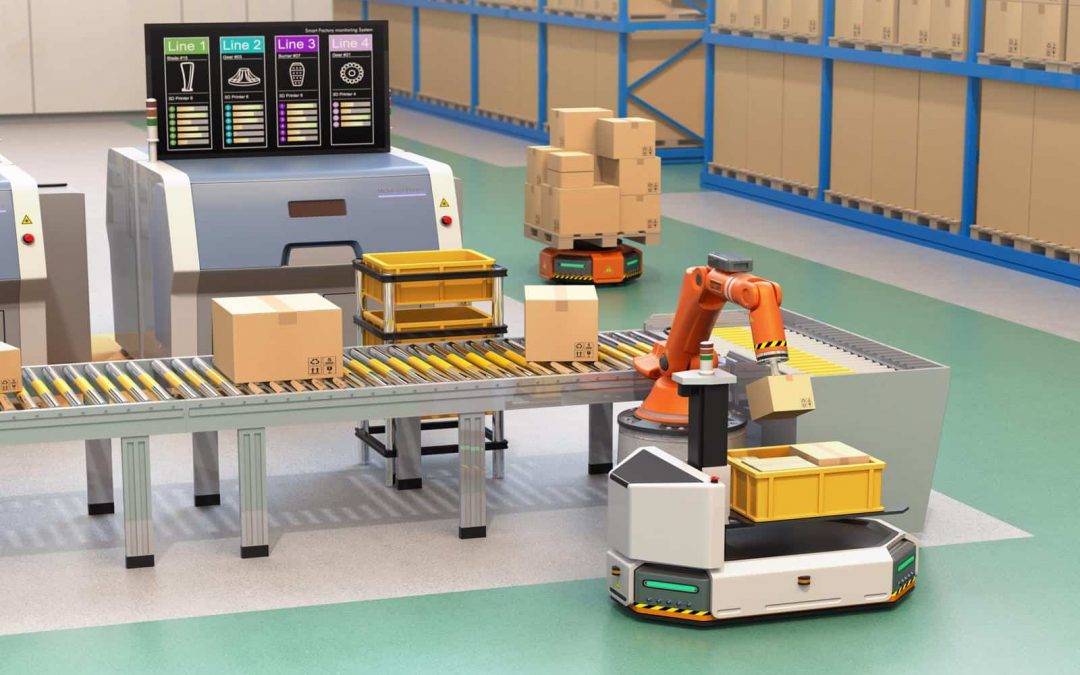
As companies navigate the complexities of contemporary logistics, the integration of intelligent technologies into warehouse management has become a focal point. We find ourselves at a crucial juncture where these pioneering solutions transform conventional warehouse procedures. It goes beyond the ordinary routine – we are stepping into a fresh era of warehouse management fueled by more intelligent strategies and cutting-edge innovations.
What is a Smart Warehouse
A smart warehouse is more than just a conventional storage and distribution model; it represents an advanced system that integrates various software and hardware tools. This advanced system supervises inventory, tracks shipments, and enhances the overall functioning of warehouses. By employing automated data collection and analysis processes, warehouse automation technology empowers informed decisions concerning inventory management, workforce allocation, and shipping optimization.
Technologies to Make Warehouse Smart
Internet of Things
IoT is a cornerstone of smart warehouse technology. IoT enables the creation of a synchronized system with real-time data using sensors and tags. This technology not only prevents errors and theft but also identifies vulnerabilities in operations, ensuring a seamless and secure workflow.
RFID Technology
This technology offers an advanced solution. Functioning as a sophisticated substitute for conventional barcode scanners, it can remotely read RFID tags, diminishing the necessity for manual searches and substantially enhancing operational efficiency. Providing a more streamlined and automated approach reduces the workload and contributes to overall process optimization in a warehouse or similar operational setting.
Automated Inventory Control Platforms
Empower businesses to track and reorder stock, generate instant documentation, and access real-time data. Organizations can scale faster and free workers from mundane activities by automating these tasks. It offers a complete solution for effective inventory management, connecting to warehouse management systems, or functioning independently.
Automated Guided Vehicles and Autonomous Mobile Robots
AGVs move items along marked paths and are particularly useful for transporting heavy containers. On the other hand, AMRs, equipped with sensors, navigate autonomously without operator intervention. Both technologies enhance safety by minimizing errors and eliminating risks to human employees.
Collaborative Robots
Robots are designed to work alongside human operators and assist with routine and repetitive tasks. Responding to the shortage of qualified personnel and rising labor costs, robots contribute to increased efficiency.
They enable human workers to focus on more complex and less hazardous assignments, creating a synergy between automation and human expertise.
How a Smart Warehouse Affects Business
As warehouse automation technology redefines the operational landscape, its influence on business becomes increasingly evident. Let’s delve into the transformative effects on key aspects:
- Customer Experience: Automation of internal operations in a smart warehouse leads to a significant improvement in customer experience. By reducing unprofitable activities such as managing employee schedules, task assignments, payrolls, and safety protocols, businesses can direct more attention to meeting customer needs and expectations.
- Safety and Cost of Labor: Smart warehouses mitigate manual labor’s physical and financial challenges. Automation transforms jobs from hard physical tasks to more intellectually demanding monitoring roles. This enhances workplace safety and cuts costs during peak shipment periods. Additionally, automation contributes to transparency by minimizing the risks of human error in tasks like inventory management.
- Security and Transparency: Automation provides traceability and reduces the risks associated with human error. Systems like SKU barcodes replace manual entry journals, offering invoicing, shipment tracking, and inventory management transparency. This not only enhances accuracy but also ensures the reliability of critical business data.
Where to Get a Smart Warehouse
To transition a conventional warehouse into a smart one, businesses decide between developing a custom turnkey infrastructure or adopting ready-made solutions. Opting for a turnkey infrastructure entails the creation of a tailored, smart warehouse solution from the ground up, aligning with specific business requirements. Conversely, ready-made solutions provide pre-built smart warehouse systems that can be swiftly integrated, saving time and resources. The decision between these options relies on budget limitations, time constraints, and the preferred degree of customization. It’s a good idea to reach experts in smart warehouse solutions, such as Euristiq. This company provides valuable insights, helping businesses make informed decisions and smoothly transition to a more efficient and technologically advanced warehouse environment.
The evolution of the supply chain has instigated a substantial shift, ushering in the concept of smart warehouses. These groundbreaking facilities represent a departure from conventional practices, as they integrate advanced technologies to reshape the operational landscape of warehouses. Unlike traditional storage and distribution models, smart warehouses distinguish themselves by leveraging cutting-edge solutions to finely tune numerous processes, creating an environment where productivity is not merely a target, but an established norm.















